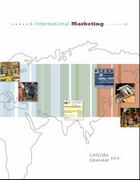Answered step by step
Verified Expert Solution
Question
1 Approved Answer
Suppose you have preferences over two normal goods: the number of trees in your neigh- borhood (T) and a composite good (C). Specifically, your utility
Suppose you have preferences over two normal goods: the number of trees in your neigh- borhood (T) and a composite good (C). Specifically, your utility function is given by U(T,C) = TC and you have income Y0. The trees in your neighborhood are publicly provided so you are not free to chose your preferred level of T. However, you are free to purchase any level of C that you want, provided you can afford it. Under these conditions, your optimization problem can be written as s.t. Y0 = PCC. Since you cannot spend money on increasing the number of trees (T), there is no trade off between goods, so the solution to your optimization problem clearly entails spending all of your income on C [Note: We're assuming there is only one period - i.e. no future - so there is no point in saving money]. Normalizing the price of C to $1 and substituting the budget constraint into the utility function, your maximized utility can be written as U = pTY0. Currently, you have $5,000 in income and there are 8 trees in your neighborhood. Using this information, answer the following questions. [Note: It is not necessary to
Step by Step Solution
There are 3 Steps involved in it
Step: 1

Get Instant Access to Expert-Tailored Solutions
See step-by-step solutions with expert insights and AI powered tools for academic success
Step: 2

Step: 3

Ace Your Homework with AI
Get the answers you need in no time with our AI-driven, step-by-step assistance
Get Started


